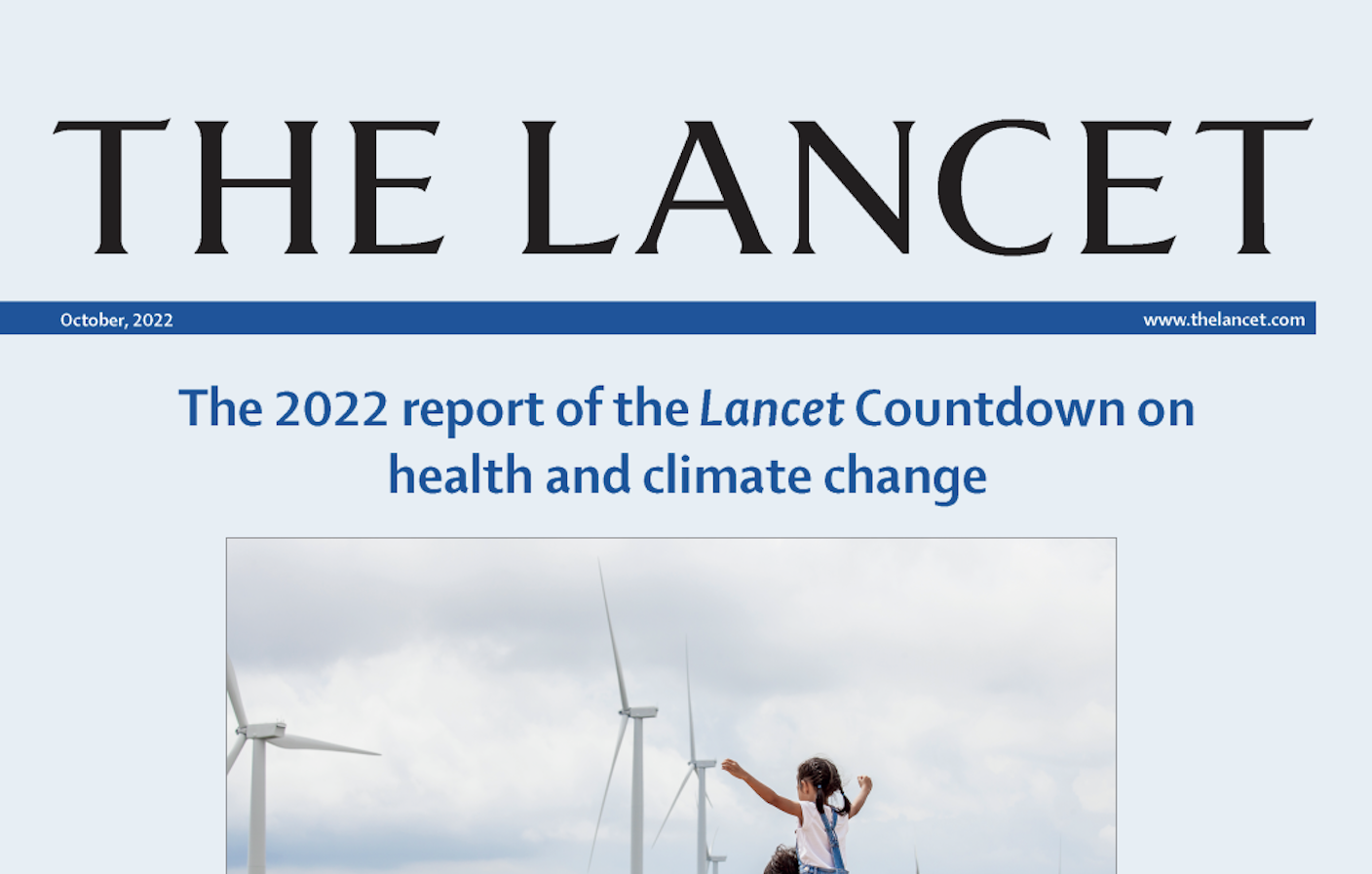Publications

The 2022 report of the Lancet Countdown on health and climate change: health at the mercy of fossil fuels
The Lancet
|October 2022
The 2022 report of the Lancet Countdown is published as the world confronts profound and concurrent systemic shocks. Countries and health systems continue to contend with the health, social, and economic impacts of the COVID-19 pandemic, while Russia’s invasion of Ukraine and a persistent fossil fuel overdependence has pushed the world into global energy and cost-of-living crises. As these crises unfold, climate change escalates unabated. Its worsening impacts are increasingly affecting the foundations of human health and wellbeing, exacerbating the vulnerability of the world’s populations to concurrent health threats.

Plant-level real-time monitoring data reveal substantial abatement potential of air pollution and CO2 in China’s cement sector
One Earth
|August 2022
China is the world’s greatest cement producer, generating significant air pollution and CO2 emissions. To combat these impacts, China introduced stricter air pollution standards for the cement industry in 2015. Cement’s PM, SO2, and NOX reduced by 50%, 44%, and 34% between 2014 and 1028 respectively, but CO2 increased by 5%.

Solely economic mitigation strategy suggests upward revision of nationally determined contributions
One Earth
|August 2021
This paper provides an alternative perspective to the current discussion and treats emission reduction as a solely economic behaviour motivated by avoiding future economic damages from climate change. Through exploration of the economic trade-offs, our results suggest that more ambitious nationally determined contributions (NDCs) are urgently needed.

Effect of strengthened standards on Chinese ironmaking and steelmaking emissions
Nature Sustainability
|June 2021
We use measurements from China’s continuous emissions monitoring systems to develop hourly, facility-level emissions estimates for China’s iron and steel industry. From 2014 to 2018, PM and SO2 emissions fell by 47% and 42%, respectively, and NOx increased by 3%, even as the production increased by 14%.

Network resilience of phosphorus cycling in China has shifted by natural flows, fertilizer use and dietary transitions between 1600 and 2012
Nature Food
|June 2020
we examine the network resilience of P cycling in China from 1600 to 2012. Over 2000–2012, the network resilience of P cycling has decreased by 11% owing to dietary changes towards more animal-based foods. A trade-off between network resilience improvement and increasing food trade is also observed.

Economic development and converging household carbon footprints in China
Nature Sustainability
|March 2020
Carbon footprint Gini coefficients were calculated to measure carbon inequality for households across provinces. The top 5% of income earners in China were responsible for 17% of the national household carbon footprint in 2012, while the bottom half of income earners caused only 25%. Carbon inequality declined with economic growth.

Substantial emission reductions from Chinese power plants after the introduction of ultra-low emissions standards
Nature Energy
|October 2019
A nationwide, unit-level, hourly-frequency emissions dataset was constructed using data from a continuous emissions monitoring systems network covering 96–98% of Chinese thermal power capacity. Between 2014 and 2017, China’s annual power emissions of SO2, NOx and PM dropped by 65%, 60% and 72%, respectively.

The slowdown in China’s carbon emissions growth in the new phase of economic development
One Earth
|October 2019
We explored the role of socioeconomic drivers in China’s CO2 emission changes. China’s annual emissions growth declined from 10% (2002–2012) to 0.3% (2012–2017), which was mainly caused by gains in energy efficiency, deceleration of economic growth, and changes in consumption patterns.

Trans-provincial health impacts of atmospheric mercury emissions in China
Nature Communications
|April 2019
About 0.14 points of per-foetus intelligence quotient (IQ) decrements and 7,360 deaths from fatal heart attacks are related to the intake of methylmercury in 2010. Interprovincial trade induced by final consumption prevents 0.39 × 10−2 points for per-foetus IQ decrements and 194 deaths from fatal heart attacks.

The sharing economy promotes sustainable societies
Nature Communications
|March 2019
A simultaneous improvement in both ecological and economic efficiency is necessary to achieve the Sustainable Development Goals (SDGs). The new sharing economy has potential to promote the needed shifts in collective consumption behaviour, but better governance models are urgently required.

Social cost of carbon under shared socioeconomic pathways
Global Environmental Change
|November 2018
The Dynamic Integrated model of Climate and the Economy (DICE) was used to update the Social Carbon Cost (SCC) under the five socioeconomic pathways. In a world developing towards regional rivalry (SSP3), the SCC would likely double compared with other scenarios.

City-level climate change mitigation in China
Science Advances
|June 2018
More affluent cities have systematically lower emissions per unit of GDP, supported by imports from less affluent, industrial cities located nearby. In turn, clusters of industrial cities are supported by nearby centres of coal or oil extraction. Substantial reductions are possible by updating a disproportionately small fraction of existing infrastructure.

Environmental benefits of bike sharing: A big data-based analysis
Applied Energy
|June 2018
Using big data techniques, we estimate the impacts of bike sharing on energy use and carbon dioxide (CO2) and nitrogen oxide (NOX) emissions in Shanghai. In 2016, bike sharing in Shanghai saved 8358 tonnes of petrol and decreased CO2 and NOX emissions by 25,240 and 64 tonnes, respectively.

The rise of South–South trade and its effect on global CO2 emissions
Nature Communications
|May 2018
Trade among developing nations (i.e., South–South trade) has more than doubled between 2004 and 2011, which reflects a new phase of globalization. Some production activities are relocating from China and India to other developing countries, particularly raw materials and intermediate goods production in energy-intensive sectors.

Chinese CO2 emission flows have reversed since the global financial crisis
Nature Communications
|November 2017
We utilised the latest socioeconomic datasets to compile China’s 2012 multiregional input-output (MRIO) table. Emissions embodied in China’s exports declined from 2007 to 2012 mainly due to changes in production structure and efficiency gains, while developing countries became the major destination of China’s export emissions.